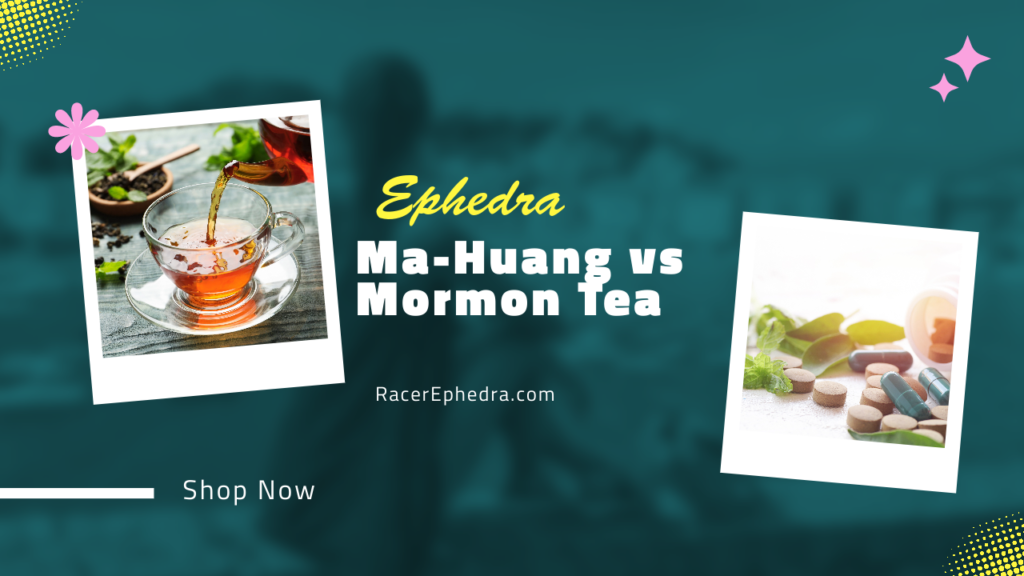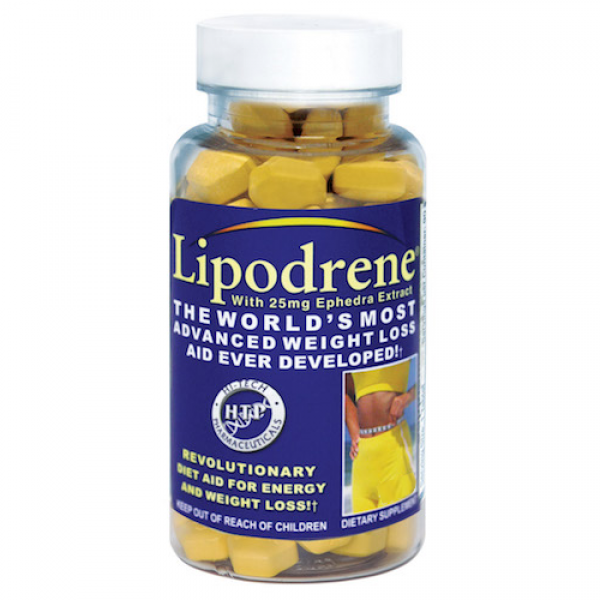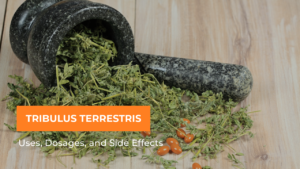For over 4000 years, Traditional Chinese Medicines (TCMs) have been used to treat various diseases, with their popularity skyrocketing in recent decades due to their moderate treatment effects and lower side effects. Among the plethora of herbs employed in TCM, Ma Huang, also known as Ephedra, stands out as a treasure of natural herbal products. Its inclusion in TCM formulas has been integral to restoring overall healthful balance and normal body function in a holistic way.
In this article, we will delve into the history, therapeutic concepts, and pharmacological mechanisms of Ma Huang to shed light on its fascinating characteristics. By applying systems pharmacology, we aim to unravel the mysteries surrounding the combination principles of Ma Huang in TCM formulas, exemplified by the famous Ma Huang Decoction.

Understanding TCM Formulas
TCM embraces the concept of Herb Formulas, known as “Fu-Fang” in Chinese. These formulas are not simply a pile of medicinal herbs but are carefully organized based on TCM theory, drug compatibility, and combination rules to treat specific diseases. The combination principle in TCM follows the rule of “Jun-Chen-Zuo-Shi,” commonly known as the Four Responsible Roles. Each herbal ingredient plays a specific function in treating the disease, with the “Jun (emperor)” herb acting as the principal active ingredient, the “Chen (minister)” herb assisting in promoting the curative effect, the “Zuo (adjuvant)” herb modulating the effects, and the “Shi (messenger)” herb harmonizing the action of all ingredients.
Ma Huang: An Ancient Herb with Modern Relevance
Ma Huang, scientifically known as Ephedra, has been a key component of TCM formulas for centuries. Its therapeutic properties primarily target the respiratory system, making it effective in treating conditions such as cough, asthma, headache, and arthralgia. The Ma Huang Decoction, a classic TCM formula, combines Ma Huang with three other herbs to dispel pathogenic chills and alleviate early symptoms of colds.
Exploring the Composition of Ma Huang
Ma Huang is known for its luxuriant diversity of components, with each component exhibiting distinct structures and biological activities. Analyzing the active ingredients of Ma Huang poses a challenge to analytical chemistry and pharmacology. However, recent evidence suggests that only a few active ingredients contribute to its therapeutic effects. Modern chemical analysis techniques have been employed to separate and characterize these active ingredients, enabling a better understanding of Ma Huang’s pharmacological mechanisms.
Systems Pharmacology: A New Approach
The complexity of TCM formulas and the synergistic effects of their components require innovative approaches to decipher their mechanisms of action. Systems biology, a discipline that describes complex interactions within biological systems, provides a useful framework for understanding TCM. Combining systems biology with pharmacology has given rise to systems pharmacology, which aims to elucidate the molecular networks and mechanisms underlying the therapeutic effects of TCM.
Applying Systems Pharmacology to Ma Huang
In this study, systems pharmacology is employed to unravel the combination principles of Ma Huang in the Ma Huang Decoction. By analyzing the interactions and synergistic effects of its four constituent herbs, we aim to gain insights into the underlying mechanisms and therapeutic efficacy of this traditional formula. This approach not only contributes to our understanding of TCM but also has implications for novel drug development and applications.
The Role of Ma Huang in the Ma Huang Decoction
In the Ma Huang Decoction, Ma Huang acts as the “Jun” herb, responsible for promoting sweating, releasing exterior pathogenic chills, and stabilizing breathing. Its combination with other herbs, such as Ramulus Cinnamomi, Semen Armeniacae Amarum, and Radix Glycyrrhizae, creates a synergistic effect that enhances drug delivery and therapeutic efficacy. Understanding the specific roles of each herb in the formula is crucial for optimizing treatment outcomes.
Unraveling the Combination Principles
Despite the long history of TCM, the precise rules and mechanisms governing herb combinations remain a mystery. Systems pharmacology offers a promising approach to unraveling these combination principles. By analyzing molecular networks, pharmacodynamics, and synergistic effects, we can gain insights into the intricate interactions between herbs in TCM formulas. The study of Ma Huang in the Ma Huang Decoction serves as a stepping stone towards a deeper understanding of TCM combination principles.
The Potential of Ma Huang in Modern Medicine
The therapeutic properties of Ma Huang extend beyond its traditional use in TCM. Its active ingredients have shown potential in treating various diseases, including respiratory disorders, allergies, obesity, and even cancer. Exploring the pharmacological properties of Ma Huang and its individual components opens up new avenues for drug development and personalized medicine.
Old World Ephedra
Old World Ephedra, also known as Ephedra sinica Stapf., is a fascinating plant that has various uses and benefits. One of its significant contributions is providing browse for domestic livestock, particularly sheep, as well as wild ungulates like mule deer and pronghorn antelope. These animals rely on Old World Ephedra as a significant source of food.
Moreover, the seeds of this plant are also essential for rodents and birds. They serve as a vital food source for these creatures, contributing to the overall ecosystem. It’s amazing how such a plant can support multiple species and play a crucial role in maintaining a balanced environment.
Apart from its ecological significance, Old World Ephedra has some interesting uses for humans as well. While the seeds are important for wildlife, the twigs of this plant, especially those from green Mormon-tea, can be used to make a refreshing tea. Although ephedrine, which is a pharmaceutically active compound found in the Old World species E. sinica Stapf., has not been detected in any North American species, the twigs of green Mormon-tea are still used to make this reputedly invigorating beverage.
Furthermore, Old World Ephedra possesses great potential for landscape use due to its attractive appearance. The unique characteristics of this plant make it an intriguing addition to any landscape, adding visual interest and diversity to outdoor spaces.
Basically, Old World Ephedra is not only an important food source for domestic livestock and wild ungulates but also provides sustenance for rodents and birds. Additionally, its twigs can be used to make a refreshing tea. The beauty of this plant also makes it an excellent choice for landscape design. With its multiple benefits and fascinating qualities, Old World Ephedra proves to be an exceptional plant worth exploring and appreciating.
Morman Tea Harvest Seeds
When it comes to harvesting Mormon tea (Ephedra seeds), it’s important to understand that some seeds may be dormant initially. However, this dormancy usually disappears after a few months of storage or after a short period of chilling.
According to a study conducted by Kay et al. in 1977, after-ripening in storage typically helps break the dormancy of Ephedra seeds. This means that if you harvest dormant seeds, you can store them for a few months, and they will likely lose their dormancy during this time.
Additionally, the study found that chilling the seeds for 2 to 4 weeks can also help break the dormancy and accelerate the subsequent germination of non-dormant seeds. So, if you have freshly harvested seeds and want to speed up their germination process, you can try chilling them for a short period.
Mormon Tea Germination
In another experiment conducted by Meyer et al. in 1988, they examined the germination rates of different seedlots that were 6 months old. They found that unchilled seeds of green Mormon-tea had a germination rate of only 10% after 7 days at temperatures ranging from 10 to 20 °C.
On the other hand, Nevada Mormon-tea had a much higher germination rate of 49 to 54% for two different seedlots after the same time period and temperature range. And Torrey Mormon-tea showed even better results, with germination rates of 95 to 100% for three different seedlots.
Certainly, harvesting Mormon tea seeds can sometimes result in dormant seeds. But don’t worry, this dormancy usually disappears after a few months of storage or after chilling the seeds for a short period. By following these methods, you can increase the germination rates of your Mormon tea seeds and improve your chances of successful cultivation. Happy planting!
Conclusion
Ma Huang, also known as Ephedra, is an ancient herb that continues to captivate researchers and practitioners in the field of Traditional Chinese Medicine. By applying systems pharmacology, we can unravel the mysteries of Ma Huang’s combination principles in TCM formulas like the Ma Huang Decoction. This knowledge not only enhances our understanding of TCM but also holds promise for the development of novel therapies and personalized medicine. As we continue to explore the potential of Ma Huang and other TCM herbs, we bridge the gap between ancient wisdom and modern science, unlocking new possibilities for healthcare.
References
Yao Yao, Xiaodong Zhang, Zhenzhong Wang, Chunli Zheng, Peng Li, Chao Huang, Weiyang Tao, Wei Xiao, Yonghua Wang, Luqi Huang, Ling Yang, Deciphering the combination principles of Traditional Chinese Medicine from a systems pharmacology perspective based on Ma-huang Decoction, Journal of Ethnopharmacology, Volume 150, Issue 2, 2013, Pages 619-638, ISSN 0378-8741, https://doi.org/10.1016/j.jep.2013.09.018
Boozer, C., Nasser, J., Heymsfield, S. et al. An herbal supplement containing Ma Huang-Guarana for weight loss: a randomized, double-blind trial. Int J Obes 25, 316–324 (2001). https://doi.org/10.1038/sj.ijo.0801539
Lee, M.R., 2011. The history of Ephedra (ma-huang). JR Coll Physicians Edinb, 41(1), pp.78-84 https://www.rcpe.ac.uk/sites/default/files/lee_4.pdf
Hodgkinson, H.S., 1983. Relationship between Cutler Mormon-tea Ephedra cutleri and coppice dunes in determining range trend in northeastern Arizona Soil, climatic factors, and vegetation. Rangeland Ecology & Management/Journal of Range Management Archives, 36(3), pp.375-377. https://journals.uair.arizona.edu/index.php/jrm/article/viewFile/7544/7156
Meyer, S.E., 1995. Ephedra. Provo, UT: USDA Forest Service, Rocky Mountain Research Station. https://www.fs.usda.gov/rm/pubs_series/wo/wo_ah727/wo_ah727_492_494.pdf




